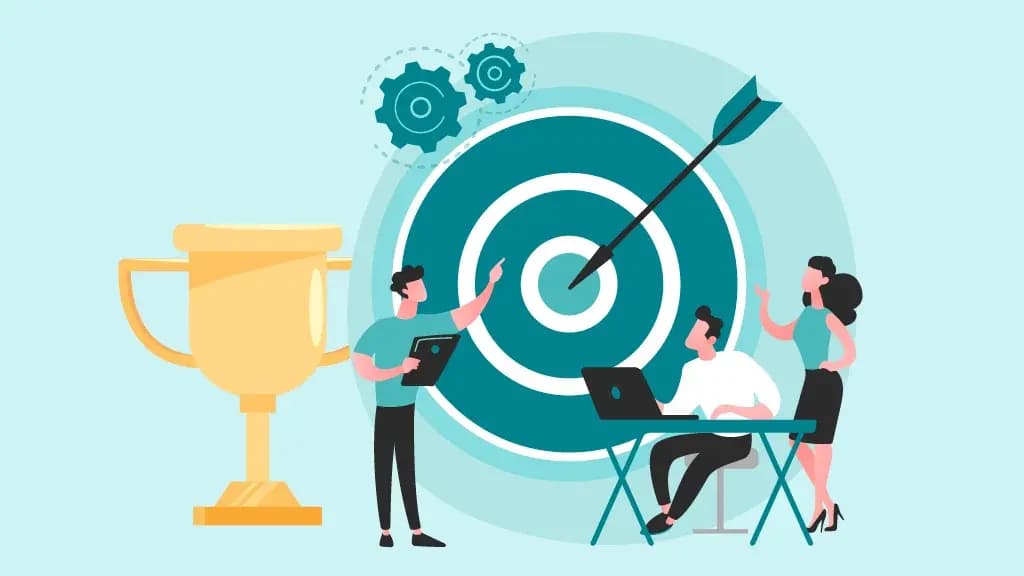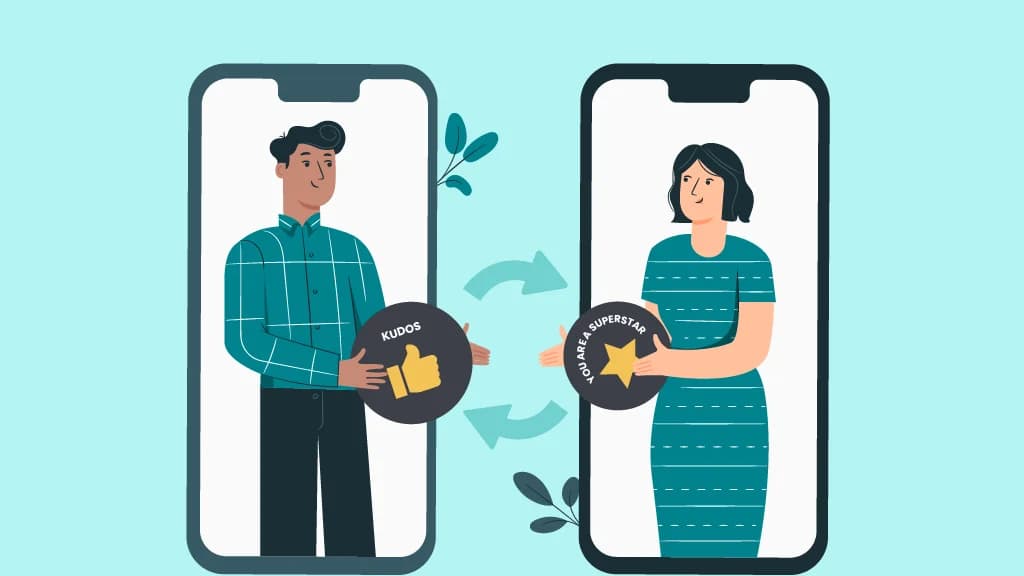
For years, employee reward programs have mostly looked the same: a standard list of gift cards, movie passes, or coupons that supposedly appeal to everyone. But the way we work and what we value at work has changed. Teams today are diverse, often hybrid or fully remote, and shaped by different cultural backgrounds, lifestyles, and motivations. That old, one-size-fits-all reward model isn’t just outdated; it’s being replaced by AI-powered employee rewards systems. People want to feel seen. They want recognition that reflects who they are, what they care about, and how they contribute. Nowadays, our playlists, shopping suggestions, and news feeds are tailored to us. In the same way, the way we are appreciated at work should feel personal too.
This is where personalized recognition programs make a meaningful difference. Instead of guessing what people might like, AI recognition systems learn what actually motivates each individual. The experience shifts from a checkbox transaction to genuine appreciation. It’s not about giving more rewards; it’s about giving rewards that truly matter to the person receiving them.
6 Ways AI-Powered Employee Rewards Are Replacing Generic Rewards
1. Expose the Fatal Flaws of Generic Reward Catalogs
Traditional reward programs were originally designed for simplicity. The goal was to create a single standardized system that worked for everyone, regardless of role, location, or preferences. On the surface, that seemed efficient. But over time, what started as an attempt to be fair and scalable slowly turned into something that feels generic and disconnected.
Why uniformity misses the mark:
- Generic catalogs fail to inspire. When every employee receives the same gift card selection or the same movie ticket options, the gesture can feel transactional rather than thoughtful.
- One person’s reward is another’s indifference. A coffee voucher might be exciting for some, but someone who values family experiences or wellness perks may feel overlooked.
- Uniformity sends the wrong message. It implies that everyone is motivated by the same things, when in reality, people’s values and lifestyles vary dramatically.
The real cost of generic rewards:
- Low redemption rates signal that the reward didn’t matter.
- Budgets are spent on rewards that employees don’t want or use.
- Trust and engagement decline when appreciation feels impersonal.
Now that reward platform AdvantageClub.ai’s ADVA can handle peer-to-peer and manager recognition with a simple conversational command, it becomes even clearer how outdated the old, manual, one-size-fits-all catalog really is. Recognition can be instant, relevant, and human if the reward program is designed to adapt.
2. Turn Behavioral Data Into Individual Motivation Insights
Workplaces have changed, and so have expectations around recognition. Personalization isn’t seen as a perk anymore, it is the baseline. AI-powered employee rewards systems now help organizations understand employees as individuals with their own motivations, personalities, and values.
How intelligent reward systems decode what drives people:
- Discover preference patterns. Machine learning-driven employee engagement platforms observe what each employee responds well to, like public praise, private acknowledgment, skill-building experiences, or wellness-focused perks.
- Decode motivation drivers. AI helps identify whether someone is driven by autonomy, mastery, belonging, or purpose.
- Adapt to roles and cultures. Recognition can feel fair and relevant whether someone works in an office, in the field, abroad, or remotely.
- Embed neurodiversity awareness. Tone, sensory comfort, and social interaction preferences are respected rather than overlooked.
- Enable empathetic automation. HR teams can personalize recognition without adding more manual work.
Agentic AI can automatically complete award allocation once motivation cues are identified. Managers no longer have to navigate menus or policies just to do the right thing. Appreciation becomes natural, not administrative.
3. Build Customized Reward Catalogs That Evolve With Your People
The next chapter of employee loyalty is about offering the right rewards. That requires customized reward catalogs that change as employees grow, advance, relocate, or simply evolve in what they care about.
What makes a catalog genuinely personalized:
- Flexibility across types of rewards: Experiences, digital learning, wellness memberships, home lifestyle perks, community contributions, and more.
- Cultural and regional relevance: Local brands, meaningful holidays, and familiar community touchpoints.
- Barrier-free access: Rewards should redeem seamlessly, across devices, countries, and currencies.
Strategic segmentation helps create deeper meaning:
- By role: Remote teams may value different rewards than frontline workers or managers.
- By motivation type: Some employees want recognition tied to achievement; others respond to belonging or exploration.
- By neurodiversity preferences: People interact with recognition differently and platforms must honor that.
AI recognition systems like AdvantageClub.ai use ongoing learning to update these catalogs continuously, so rewards don’t feel static or outdated. And with instant preference detection, employees can simply say, “Redeem my points for a wellness membership” and the system does the work, no browsing, no second guessing, no friction.
4. Deploy Real-Time Recognition That Adapts to Context
Recognition is most effective when it’s timely. A great moment of support, collaboration, problem-solving, or leadership can lose emotional impact if appreciation arrives weeks later.
How AI makes recognition feel natural and context-aware:
- Suggesting a growth-focused reward when someone completes a training milestone.
- Recommending an eco-conscious reward for someone who aligns with sustainability.
- Surfacing a values-aligned thank-you message when someone demonstrates core company principles.
Peer-to-peer appreciation also becomes more meaningful when employees are guided on how to express it, especially in distributed or global teams where communication norms vary. ADVA is able to complete the recognition action through a simple chat request; the moment of appreciation is never delayed, recognition happens while the feeling is still real.
5. Prove ROI Through Metrics That Actually Matter
Personalized employee benefits have emotional impact but they have measurable business impact, too.
Metrics that demonstrate meaningful engagement:
- Reward utilization rates: Do employees redeem the rewards they receive?
- Frequency of recognition: How consistently do peers and leaders appreciate contributions?
- Sentiment analytics: Are employees expressing positive, fulfilled, connected energy—or something else?
Intelligent reward systems turn these HR metrics into clear, actionable guidance. They help leaders see what’s working, where recognition may feel uneven, and how appreciation influences retention and performance.
And with Agentic AI’s real-time reporting through a single conversational request, leaders no longer have to sift through dashboards or exports. They can simply ask, “Show me recognition activity this quarter,” and act on what they learn immediately.
6. Build Human-Centric Loyalty in the Age of AI
AI in HR rewards helps organizations show care consistently, thoughtfully, and at scale. Personalized loyalty programs have shifted from static catalogs to living systems that continue to learn and evolve.
What we’re moving toward is purposeful recognition:
- Recognition that feels personal.
- Appreciation that feels sincere.
- Rewards that reflect who people are and not who the policy assumes they are.
And with ADVA offering on-demand policy and budget guidance directly , managers can act with confidence instead of hesitation. Recognition becomes natural, continuous, and emotionally grounded for an incredible employee experience journey.
The Future of Recognition: Personalization and Purpose
The future of employee recognition is where personalization meets purpose. It’s about celebrating people for what they uniquely bring and reminding them why their work matters. Moving away from one-size-fits-all rewards isn’t just a change in the reward catalog; it’s a shift in how organizations choose to see their people.
With AI in HR rewards, companies can now recognize employees in ways that reflect real individuality.
AdvantageClub.ai makes this possible with innovative employee engagement offerings. The AI-driven recognition platform pairs real-time recognition with cultural awareness, thoughtful context, and values-led appreciation. Instead of a static list of generic perks, customized reward catalogs evolve as people grow, reflecting their preferences, motivations, and interests. When organizations embrace this more human approach to recognition, employees feel seen, valued, and understood, not just rewarded. The real power of AI isn’t in automating appreciation; it’s in amplifying the best parts of it.






